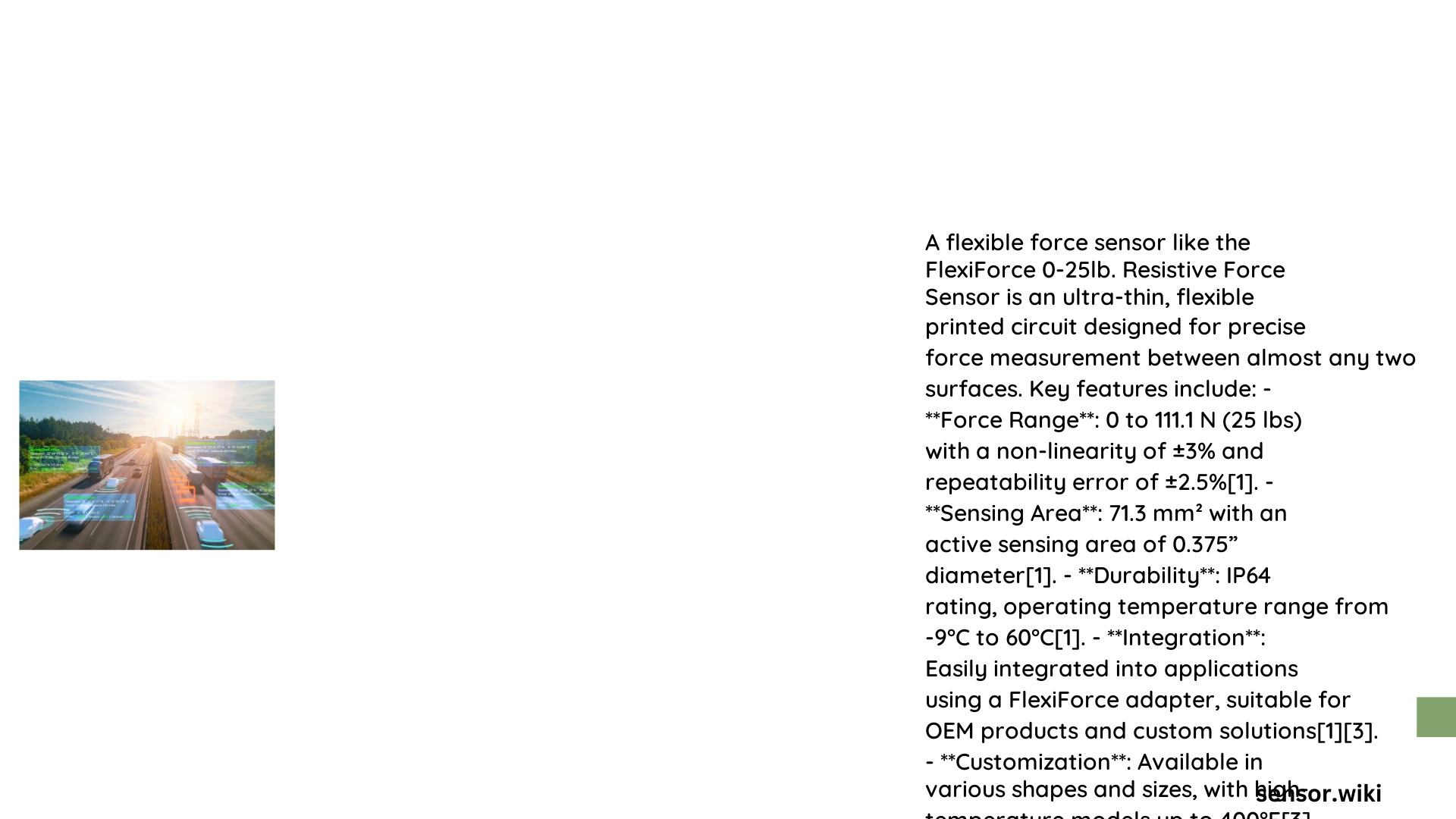Flexible force sensors represent a revolutionary technological advancement in precision measurement, enabling dynamic force detection across ultra-thin, adaptable substrates. These sophisticated sensors transform mechanical pressure into electrical signals, providing unprecedented sensitivity and versatility for applications ranging from medical devices to advanced robotics, consumer electronics, and industrial monitoring systems.
What Makes Flexible Force Sensors Unique?
Flexible force sensors distinguish themselves through remarkable characteristics:
- Ultra-Thin Design: Typically measuring around 0.008″ (0.208 mm) thick
- High Sensitivity: Capable of detecting minute force variations
- Adaptable Form Factor: Can conform to complex surface geometries
How Do Flexible Force Sensors Work?
Flexible force sensors operate on a fundamental principle of resistance modulation:
- Pressure Application: External force compresses conductive materials
- Resistance Change: Compression alters electrical resistance
- Signal Conversion: Resistance changes translate into measurable electrical signals
| Sensor Characteristic | Specification |
|---|---|
| Thickness | 0.008″ (0.208 mm) |
| Response Time | < 5 microseconds |
| Operating Temperature | 15°F to 140°F (-9°C to 60°C) |
| Linearity Error | < ±3% |
What Materials Compose Flexible Force Sensors?

Substrate Components
- Polyester Films: Provide fundamental structural flexibility
- Polyimide Layers: Enhance durability and thermal resistance
- Conductive Silver Ink: Enables precise force measurement
Where Are Flexible Force Sensors Applied?
Healthcare Innovations
Flexible force sensors revolutionize medical technology through:
– Prosthetic limb pressure monitoring
– Rehabilitation equipment tracking
– Wearable health diagnostic devices
Robotics Integration
Robotic applications leverage these sensors for:
– Tactile feedback mechanisms
– Gentle object manipulation
– Precise force control systems
Consumer Electronics
Implementations include:
– Pressure-sensitive touchscreens
– Gesture recognition interfaces
– Ergonomic input devices
What Challenges Exist in Flexible Force Sensor Design?
Key design considerations involve:
– Maintaining consistent calibration
– Managing temperature-induced variations
– Ensuring long-term durability
– Minimizing signal interference
What Future Developments Are Anticipated?
Emerging trends suggest:
– Increased miniaturization
– Enhanced multi-axial sensing capabilities
– Integration with artificial intelligence
– Improved biocompatible materials
Technical Performance Metrics
- Sensitivity Range: 0-1 lb to 0-100 lbs
- Repeatability: < ±2.5% of full scale
- Hysteresis: < 4.5% of full scale
Conclusion
Flexible force sensors represent a transformative technology bridging mechanical interaction and electrical measurement, promising continued innovation across multiple technological domains.
Reference:
– Tekscan FlexiForce Sensors
– Flexible Force Sensor Research
